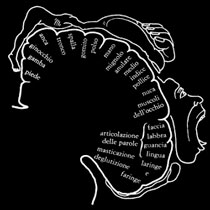In what sense architecture is complex: the role of drawing in architectural design

Published 2022-12-02
Keywords
- Architectural Composition,
- Representation,
- Drawing
How to Cite
Copyright (c) 2022 FAMagazine. Research and Projects on Architecture and the City

This work is licensed under a Creative Commons Attribution-NonCommercial-ShareAlike 4.0 International License.
Abstract
This essay traces the fundamental relationship between architecture as a discipline and a work of architecture. Architecture and works of architecture are constantly swapping places within a circle, an experience which, over time, has built up and gradually standardized their rapport: works start from the nomenclature of which the discipline is constituted, whose validity is in turn certified by the works built.
The midpoint term which conveys the flow along the (circular) process of architectural design is drawing, in its twofold value of representation and figuration, with that semiotic and notational value with which Leon Battista Alberti exhorted his students to learn to paint as one learns to write.
References
- APRILE M. (1993) – Dal giardino al paesaggio. Flaccovio, Palermo.
- BARTHES R. (1982) – Il grado zero della scrittura. Einaudi, Turin.
- BURKE E. (1757) – A Philosophical Enquiry into the Origin of Our Ideas of the Sublime and Beautiful.
- CASSIRER E. (1942) – “Linguaggio e arte II”. In: (1981) – Simbolo, mito e cultura. Laterza, Rome-Bari.
- COSGROVE D. (1990) – Realtà sociali e paesaggio simbolico. Unicopli, Milan.
- FOCILLON H. (1990) – Vita delle forme, seguito da Elogio della mano. Einaudi, Turin.
- GADAMER H. G. (1985) – Verità e metodo. Bompiani, Milan.
- GOETHE W. (1807) – “Sollecitazione significativa per una sola parola intelligente”. In: (1983) – La metamorfosi delle piante. Guanda, Parma.
- GOMBRICH E. (1978) – Arte, percezione, realtà. Einaudi, Turin.
- GOODMAN N., QUINE W. V. (1947) – “Verso un nominalismo costruttivo”. In: (1967) – La filosofia
- della matematica. Laterza, Bari.
- GREIMAS A. J., COURTES J. (1986) – Semiotica Dizionario ragionato della teoria del linguaggio.
- La casa Usher, Florence.
- HUSSEY E. (1977) – I presocratici. Mursia, Milan.
- KENT W. (1987) – Landscape garden designer: an assessment and catalogue of his designs. A. Zwemmer Ltd, London.
- NIETZSCHE F. (2002) – La gaia scienza. UTET, Turin.
- QUENEAU R. (1967) – I fiori blu. Einaudi, Turin.
- ROSSI A. (1967) – “Introduzione a Boullèe”. In: (1978) – Scritti scelti sull’architettura e la città, 1956-1972. Città Studi, Milan.
- ROSSI A. (1990) – Autobiografia scientifica. Pratiche, Parma.
- ROSSI P. (1960) – Clavis Universalis, Arti mnemoniche e logica combinatoria da Lullo a Leibniz. Ricciardi, Milan.
- SCHEPERS W. (1980) – Hirschfelds theorie der Gartenkunst. Werner’sche Verlagsgesellschaft
- Mbh., Worms.
- SEMERANI L. (2000) – “Il parco metropolitano del nord-est”. In: QUINTELLI C. (ed.), S.S.9 via Emilia: progetti architettonici e nuovi luoghi lungo la via Emilia tra città e città. Abitare Segesta, Milan.
- SEMERANI L. (2003) – “Interno veneziano (elogio della sezione)”. In: Quaderno del
- Dottorato di ricerca in Composizione architettonica del dPa dipartimento di Progettazione
- architettonica, IUAV, 17, February.
- SEMPER G. (1992) – Lo stile nelle arti tecniche e tettoniche, o Estetica pratica: manuale per tecnici, artisti e amatori. Laterza, Rome.
- SZEEMANN H. (1989) – Le macchine celibi. Electa, Milan.
- WITTGENSTEIN (1999) – Osservazioni filosofiche. Einaudi, Turin.

